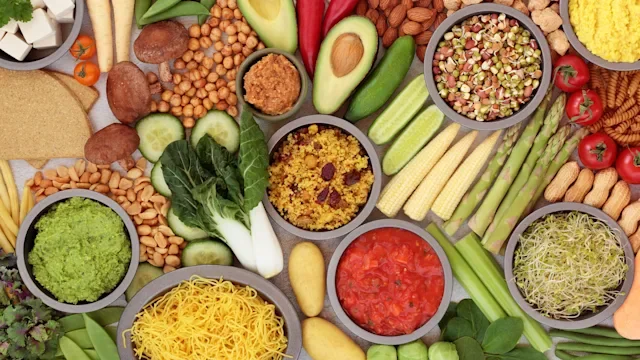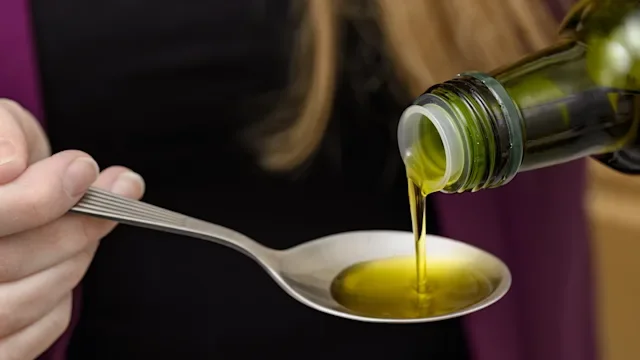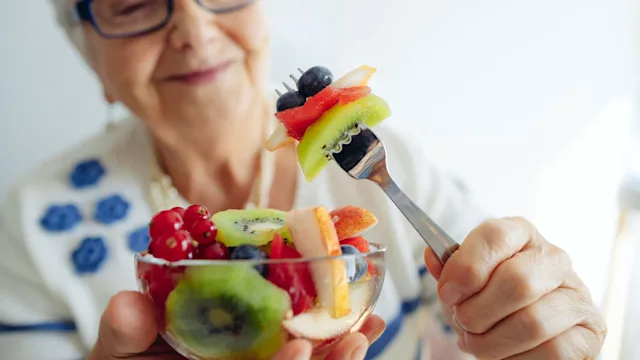Key takeaways:
Your body needs a certain amount of sodium to stay healthy. But the majority of Americans consume well over the recommended amount.
Restaurant and processed foods are the biggest sources of salt in the American diet. When you salt the food you make at home, it usually has much less salt than prepared foods.
High salt intake can do more than just raise your blood pressure. It can increase your risk of stroke, heart disease, and kidney disease.
Most people have heard that too much salt is bad for your health. But there’s a lot more to the story than that. Salt is still an important part of your diet. And when salt is good for you and when it’s bad might surprise you. So before you cut salt from your diet, here are some key facts that can help you maintain a healthy amount of sodium.
1. Salt vs. sodium is an importance difference
It’s important to note that “salt” refers to sodium chloride. So salt is a actually a combination of two electrolytes:
Sodium (40%)
Chloride (60%)
Most health guidelines refer specifically to the sodium component of salt. So this will help figure out how much sodium you’re eating. When you look at nutrition facts on food items, remember to check that sodium is listed and not salt.
2. You need (some) salt in your diet
Your body needs salt to keep functioning. Around 90% of the sodium in your body is in your blood and fluids. So you need sodium from your diet to keep a healthy balance of fluid.
Sodium plays other important roles in your body. In fact, it helps:
Essential nutrients to get into your cells
Enzymes to function normally
Nerves to send electrical signals
Your body usually can tell you how much salt it needs. You have special receptors that can sense the amount of sodium in body fluid. When your sodium level is too high, the receptors send messages to the brain that make you thirsty (so you will drink water). And when your sodium level is too low, they’ll tell the kidneys to hold onto sodium (rather than urinate).
So people need salt to live. But many get too much salt.
3. 90% of Americans get too much sodium
If you have ever wondered if you are eating too much salt, there’s a good chance you are. But know that you’re not alone. In fact, about 9 in 10 Americans get too much sodium.
Read more like this
Explore these related articles, suggested for readers like you.
An average American gets 3400 mg of sodium daily. That amount is much higher than what the experts recommend.
The Dietary Guidelines for Americans recommend 2300 mg daily. That’s about the same amount of sodium in just one teaspoon of salt.
The World Health Organization recommends 2000 mg daily.
The American Heart Association recommends 1500 mg daily for ideal heart health.
These guidelines are based on research showing that too much salt can lead to certain health problems.
4. Too much salt affects more than just your blood pressure
Many people are familiar with the way that high sodium intake can increase your risk for hypertension (high blood pressure). But high salt intake can also increase your risk for:
Strokes: High blood pressure is a risk factor for strokes. But even if your blood pressure is normal, high salt intake can still contribute to stroke risk.
Cardiovascular disease: This includes coronary artery disease, the condition that is responsible for most heart attacks.
Kidney disease: The kidneys are particularly sensitive to salt intake. And what’s more, kidney disease makes it even harder for your body to maintain the right sodium and fluid balance.
Autoimmune diseases: This one is still a matter of debate. But there is some early evidence to suggest a connection between high salt intake and autoimmune disease.
Salt intake contributes to a lot of these conditions by the way it affects blood pressure. But there’s good news. By lowering your salt intake, you can decrease your risk of high blood pressure, strokes, and death from coronary artery disease.
5. Your taste buds adapt to your daily salt intake
You may think that decreasing salt in foods may make them less tasty. And you may be right — for a while. But our taste buds seem to adapt. Research shows that people can get used to less salt in foods, and start to enjoy them. You may also be able to taste other flavors of food better.
You might also be surprised to learn that 3 in 4 Americans want less salt in prepared foods, according to a survey by the American Heart Association. In fact, about 3 in 5 of those who took the survey said they had tried to limit their sodium intake.
But to do this, you need to know where all this salt is coming from.
6. 70% of American sodium intake is from restaurant and processed foods
If you are trying to cut back on your salt intake, it may help to know where most of your daily salt comes from. In the average American diet, sodium can be placed into the following buckets:
Restaurants and processed foods: 71%
Naturally found in food: 14%
Cooking and food preparation: 6%
Added at while eating: 5%
Other sources: 1%
So for most people, eating food made at home means eating less salt. And this doesn’t mean you have to cook without salt. Studies show that people add much less salt when they are preparing food at home compared to already-prepared food.
Preparing all your meals at home is not realistic for many Americans. When you need to rely on prepared foods, opt for the lower sodium options when possible. Studies show that even when people add back in a little salt to reduced-sodium foods, they only add 20% back of the salt that was taken out. That leaves you with less sodium.
The bottom line
You need sodium to keep your body healthy. But too much salt can impact your health. High amounts of sodium over a long time can result in high blood pressure, strokes, and heart disease. Most Americans get too much salt. And the majority of that salt comes from processed foods. The good news is that you don’t have to overhaul your diet — or leave out taste — to get your salt intake down. You can start by preparing more foods at home — and feel free to add some salt.

Why trust our experts?


References
Aburto, N. J., et al. (2013). Effect of lower sodium intake on health: Systematic review and meta-analyses. British Medical Journal.
Agocs, R., et al. (2020). Is too much salt harmful? Yes. Pediatric Nephrology: Journal of the International Pediatric Nephrology Association.
Ahern, K., et al. (2021). 9.3: Transport in membranes. Biochemistry Free for All 1.3.
American Heart Association. (2014). 75% of Americans want less sodium in processed and restaurant foods infographic.
Bourque, C. W. (2008). Central mechanisms of osmosensation and systemic osmoregulation. Nature Reviews Neuroscience.
Centers for Disease Control and Prevention. (2022). About sodium.
Clausen, M. J. V., et al. (2012). Sodium/potassium homeostasis in the cell. Metallomics and the Cell.
Gardener, H., et al. (2012). Dietary sodium and risk of stroke in the Northern Manhattan study. Stroke.
Harnack, L. I., et a. (2017). Sources of sodium in US adults from 3 geographic regions. Circulation.
Jackson, S. L., et al. (2016). Prevalence of excess sodium intake in the Untied States - NHANES, 2009-2012. MMWR. Morbidity and Mortality Weekly Report.
Meyers, R. A., et al. (n.d.). Extracellular and intracellular concentration of ions in body fluids. Bionumbers.
Sacks, F. M., et al. (2001). Effects on blood pressure of reduced dietary sodium and the dietary approaches to stop hypertension (DASH) diet. The New England Journal of Medicine.
Strazzullo, P., et al. (2009). Salt intake, stroke, and cardiovascular disease: meta-analysis of prospective studies. British Medical Journal.
Sugiura, T., et al. (2018). Dietary salt intake is a significant determinant of impaired kidney function in the general population. Kidney and Blood Pressure Research.
U.S. Department of Agriculture. (2020). Dietary guidelines for Americans, 2020-2025. 9th edition.
World Health Organization. (n.d.). Reducing population sodium/salt intake.

















